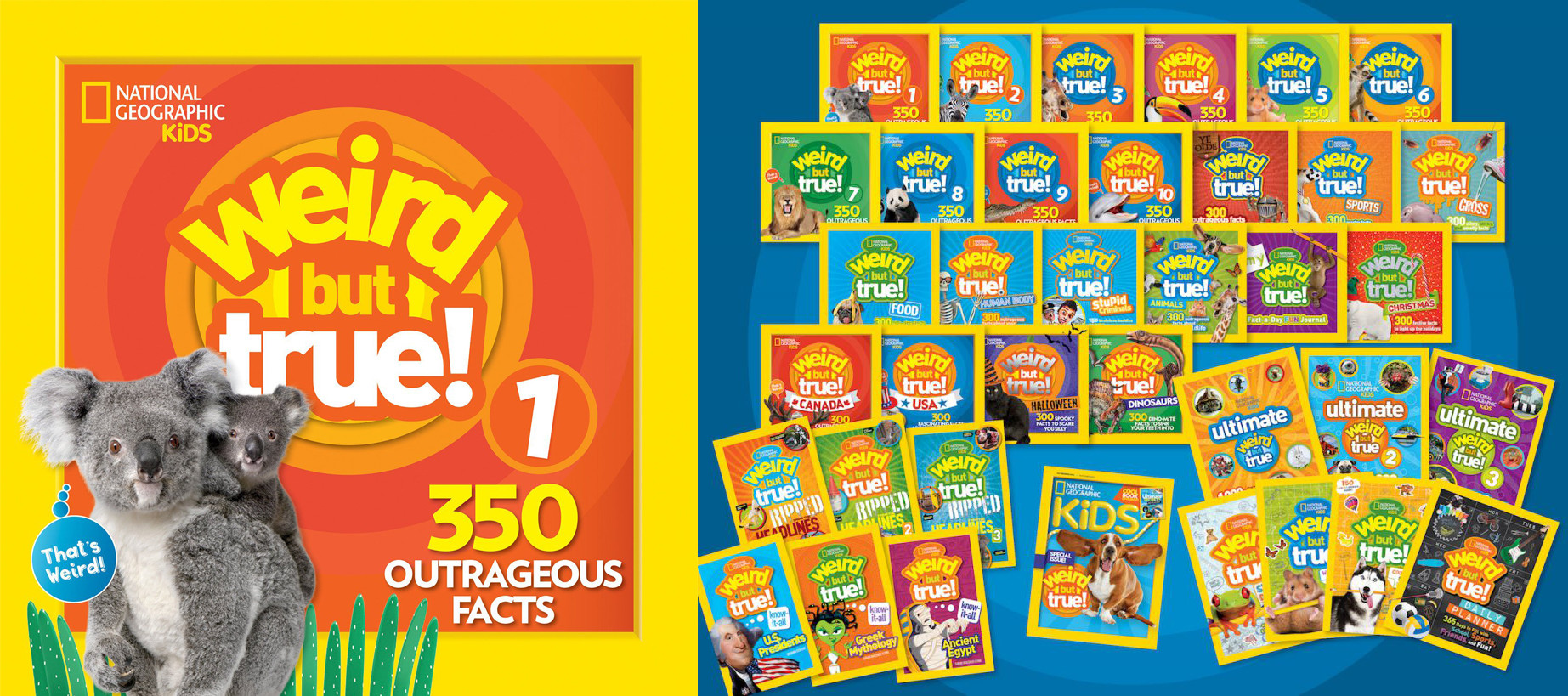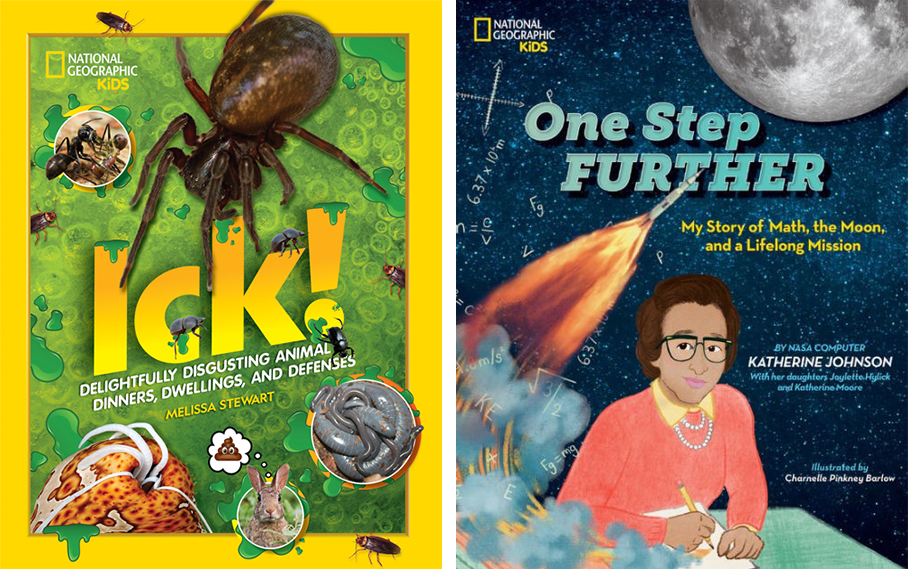
Shelby Lees
Senior Editor, National Geographic Kids
Could you give us a brief background on your career so far, including how you came to your current role at National Geographic?
I began my career in educational publishing; I’ve always had a passion for curiosity and learning, and so I put that to use creating classroom materials. That led me to take on the dual roles of curriculum and digital editor for National Geographic Explorer Magazines, where I oversaw both the curricular strategy and also managed all of the digital elements, from managing the website, audio resources, and social media presence to ideating and developing the app version of the magazines. I loved putting my skills and creativity to use to figure out how best to translate printed magazines in to an authentic, engaging app experience. I loved that aspect of my work so much that I then decided to join the NGKids Books team, where I could further work to marry best practices of pedagogy with best practices of trade: making books that curious kids want to devour!
What do you think are the necessary ingredients for successful educational and non-fiction books?
I think for too long there’s been a pretty clear line drawn between educational/non-fiction publishing and trade publishing. A successful book needs to have elements of both: all of the trade-book hook, buzz, and energy plus all of the deep knowledge about how to present complex information. Kids are so naturally curious about the world and they find joy in the simple act of discovering new information. As adults I think we sometimes forget that, so harnessing that excitement can sometimes be a challenge. But when the book team themselves is actively engaged—everyone from the author to editor to designer to the marketing manager—when everyone can read the book and say, “Whoa! That’s amazing,” you know you’ve got a winner. That goes for adult nonfiction, too!
How would you describe the children's non-fiction market today?
I’m so excited to see so many traditional trade publishers dipping their toes into non-fiction publishing. There are so many fascinating things in the world—and beyond!—that the more different angles we can approach content with, the better. For every kid who loves to read historical narrative nonfiction there’s another kid who loves to dive into fact lists. One challenge that a lot of great bloggers have pointed out is that the book industry, being story people, really tends to focus on narrative nonfiction like picture-book biographies. There’s so much more out there, though, that readers really want to read about, and so many more formats that appeal to readers that it behooves the industry (reviewers and award committees, especially) to keep an open mind about what a successful non-fiction book looks like.
Do you have a particular theme or subject matter you personally enjoy focusing on?
Animals are endlessly fascinating—there’s no shortage of amazing, unbelievable facts about them! I’m also personally really interested in how our understandings have changed over time. Paleontology and space science, for example, are rapidly changing fields. I’ve even had a few books where we had to make changes in printer proofs because new information had come to light between when we’d finished the book and then.
Tell us about some of your bestselling STEM/STEAM books.
For National Geographic Kids, our Weird-But-True series is an absolute juggernaut. It’s not a surprise, really, given how incredibly surprising all of the facts are. We recently reissued the first 10 books in the series, adding 50 new facts per book, to celebrate its 10th anniversary. You’d think at some point we’d run out of new facts, but that’s the amazing thing about our world (and space)! Of course, our atlases and encyclopedias are perennial favorites, too, and our fact-based-fiction series have found legions of fans. What’s more fun that a high-octane adventure story that includes all kinds of real-life future gadgets (Explorer Academy) or a pet hamster who’s convinced that he’s the Greek god Zeus (Zeus the Mighty)?


What portfolio advice would you offer artists looking to appeal to National Geographic?
I asked our VP of NGKids Visual Identity to weigh in on this one. Here’s what she said: Since photography plays such an important role in how we illustrate National Geographic non-fiction content, we don't often hire illustrators for our books. When we do, we focus on the editorial concept and what style will complement the story to drive the atmosphere of the book. We also look for illustrators that have experience using very specific scrap and reference materials to help visualize a historic character or a real place in a specific time period. We also look for illustration styles that have active line work and a vibrant color palette.
What's the most rewarding project you've ever worked on?
Any project I walk away from having learned and been amazed myself is a rewarding experience for me. One such book is Welcome to Mars by Buzz Aldrin with Marianne Dyson. For that book, we set out to explore what it would take to settle on Mars. There are the expected needs, of course, like ways to get water and warmth, but then there’s also the “softer” aspects of building a settlement, such as the fact that a restaurant or communal dining hall would likely be one of the first businesses/structures built. Eating is such a social activity that communal eating would be an important way to build community on a new planet.
Another really challenging but rewarding project was Code This. For that book, we set out to try to teach kids the fundamentals of coding in an offline, super-fun format. The idea was that if you can help kids understand the underlying concepts, then they’ll be able to build on that base no matter what new coding language comes along in their future.

Describe some of the creative methods you have used to engage with readers who are reluctant or unsure.
I keep coming back to it, but amazement is the key to everything. That extends to the book team, too. You can tell when you read a book that the author and whole team was really excited about—that eagerness to share what awesome thing you just learned absolutely shines through. Along with that, another method is keeping the text short and the visuals engaging. It can sometimes be difficult to find or create visuals that both accurately illustrate the content and also amaze and engage, but visuals are as much a part of the reading and content-delivery experience for nonfiction as the text is, so getting them right is really important.
Select 4 recent titles you are most proud of to share with our audience.
One recent book I just did with the incomparable Melissa Stewart is Ick. This book is so chockfull of the grossest animal behaviors that no matter how many times I read it I’d always end up wonderfully disgusted. There are so, so many animal facts in this book that I had no idea about before working on it.
I also had the honor of working with NASA mathematician and “Hidden Figure” Katherine Johnson on her picture-book autobiography, One Step Further. We really wanted to dig into her life story in a way that hadn’t been done before, including weaving in her own daughters’ paths. At the heart of the story is a mother pushing gender and racial boundaries to make room for her children to push them even further. It’s incredibly inspiring.

I absolutely loved working on Dining With Dinosaurs with paleocartoonist Hannah Bonner. I loved taking a look at dinos from a new angle, and Hannah’s humor in both her art and text is infectious and inviting.
I’m also currently working on our fact-based fiction series Izzy Newton and the S.M.A.R.T. Squad, written by American Girl book series co-creator Valerie Tripp. This series stars an awesome girl gang of brainy, independent, authentically middle-school gals who “solve mysteries and reveal truths” (S.M.A.R.T., get it?) while dealing with all the challenges, anxieties, and excitements that come with starting sixth grade.

Which non-fiction books inspired you when you were growing up?
Believe it or not, I actually loved reading the encyclopedia! We had a great children’s encyclopedia set in my house, and I would choose three entries within one letter volume to count as one “bedtime story” each night. I loved learning about all kinds of unrelated topics at once.
